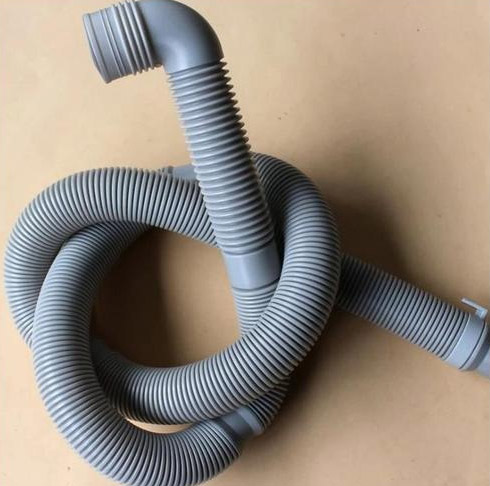If you recently purchased a washing machine for your laundry, you may need to vent the drain pipe. But even though you want to do this, you have no idea how to vent a drain pipe. The steps to vent a washing machine drain pipe have been found for you, and we are here to provide them.
Ventilation can help the laundry room reduce moisture and odor. Additionally, installing a vent lessens the need to clean the area once the laundry is done.
How Does A Vent Work?
A vent allows air to move from one location to another. It prevents laundry odor from permeating the laundry room by directing liquid particle evaporation outside.
The flow of water from the washing machine is redirected to the sewer system by venting a drain pipe. To prevent water from overflowing, homebuilders install a vent.
How Washing Machines Drain
Your washing machine is a very complex system, despite what you may think. A pump pushes the water out of the tub and into a washer drain hose once your cycle has finished. In order to reach a standpipe, this drain hose ascends in a curve. The cold and hot water valves are not far from the standpipe. In the event that everything is operating as it should, the water will rise and exit into the standpipe, which transports it to the sewage line.
The washing machine won’t drain if something goes wrong during this process, and water may back up and leak onto your bathroom floor.
What Is Needed To Vent The Washing Machine Drain
Typically, the following is required for a washing machine drain to function properly:
- Standpipe-horizontal pipe from the drain to the washer that is angled 1/4 inch per foot toward the drain.
- P-trap-necessary to ensure the water doesn’t stand still. makes a seal so that sewer gases cannot enter your home.
- Venting standpipe-this is a straight pipe (usually vented through the roof) to vent sewer gases.
- Cheater valves-creates negative pressure by opening up a valve to allow air into the line while water is flowing. Not permitted everywhere, so before installing, make sure to check the local building code.
How To Vent A Washing Machine Drain Pipe
Step 1: Diagnose the Drain Pipe issue
I don’t want you to remove the drywall only to discover that a drain vent has already been installed in the wall. You should be able to see an open PVC pipe serving as the drain vent for your laundry room if you look in your attic or roofline. It should be simple to identify the current drain vent unless you have an air admittance valve (AAV) installed in the wall. Rent a Roto-Rooter tool, snake the drain, and check for obstructions.
Step 2: Unplug and disconnect your dryer and washing machine.
Make space for us to work since we will be tearing out the drywall. Consider flipping the breaker to turn off the dryer outlet as well if you are working close to it. A bad combination is a water and electricity.
Step 3: Check for proper function
You should have a clear picture of the situation after removing the drywall. Verify the proper operation of any air admittance valves that may have been installed. Every 20 years, or approximately 20,000 cycles, these valves fail.
Step 4: Install AAV on the drainage pipe
Install an air admittance valve, or AAV, on the drainage pipe if there isn’t a drain vent. For proper air pressure control, the AAV must be at least 4 inches above the washing machine drain connection.

Step 5: Re-connect your washing machine
Reconnect your washing machine by first attaching the red and blue hoses to the hot and cold water lines, respectively. Channel locks should be used to ensure a tight, leak-free connection.
Step 6: Connect the filter
Connect the filter if your washing machine has one or if your drain hose is equipped with one. Next, make a U-shaped bend in the hose and attach it to the drain opening.
Step 7: Test the washing machine
Give it a complete cycle of operation. To ensure proper operation, allow it to drain and fill with water. Removing the washing machine and patching the wall hole should be done after making sure everything is working properly. you may choose to also install a wall vent near the air admittance valve to allow room air to be pulled into the system as needed.
Reconnect the dryer and washer in step 8 if necessary.
You’ve finished installing the washing machine drain pipe. Simply make sure, though, that the elbow-connected washing machine drain pipe is positioned so that it is 90 degrees away from the drain line and standing vertically. The drain hoses for your washing machine should be attached to the machine at the top of the drain pipe.
How To Vent The Dryer Alone
You can vent the dryer on your own by following these instructions if the washer and dryer are separate:
- Turn off the dryer.
- Find the vent hole, which is typically located along the dryer’s lower back.
- Connect the dryer to the main vent with a ventilation hose.
- By arranging the cables according to their colors, install the 4-wire dryer cord.
- Use a wet fabric and drain it to test the dryer.
How Much Does It Cost
Depending on your needs, the price varies. If you only need to replace the drainpipe, the cost ranges from $230 to $1,140. Building permits range in price from $30 to $150. The washing machine may then need to be replaced entirely. The price for a new machine could range from $350 to $1,200 depending on the size you require.
Symptoms Of Poor Drain Pipe Venting
The most typical sign of inadequate drain pipe venting is the smell of rotting sewer gas coming from your pipes.
If your washing machine isn’t draining, the drain pipe may be blocked. Additionally, it is a rare possibility that the drain line isn’t vented, which would slow the water’s drainage. However, it is much more likely that the drain is blocked or that it is too small for the new washing machines with high-discharge pumps.
Slow Draining
In severe situations, a lack of venting could make plumbing drain slowly. When another faucet is turned on, a toilet may lose water or refill slowly and reach a low point.) It is theoretically possible for flooding to result from a lack of a washing machine drain vent with the new, high-discharge washing machines. Poor venting is rarely the cause of slow draining; instead, clogs are.
Water Backing Up In The Kitchen Sink
It can be a sign of poor drainage from a poorly vented plumbing system when the washing machine drains and spills water into the kitchen sink.
Foul Smells
Venting primarily serves to safeguard the two inches of water that are contained in the p trap. There is a drain trap underneath each sink in your home. To stop bad odors from returning to the living area, these traps always have about 2 inches of water. Poor plumbing venting causes a home’s low water pressure in one area to completely fill the other drain traps when water is running through it.
Gurgling
When water is running in another area of the house because of poor venting, you might hear gurgling coming from one drain. The variations in air pressure in the line are to blame for this.
Conclusion
You must seek advice from a number of professionally qualified plumbing contractors before carrying out any plumbing upgrades or repairs. To get quotes for installing a washing machine drain line vent, you should first call a few qualified and licensed plumbers.
If you have other problems with washing machines, welcome to check the following guides!
- How to Use Bleach In Your Washing Machine – Is It Safe to Use
- Can You Transport A Washing Machine On Its Side When Moving?
- How to Reset Electrolux Washing Machine With Easy Methods
- Can You Add An Agitator To A Washing Machine – How to Use
- How To Break Into Car Wash Change Machines In Simple Ways?
- How Can I Find Lost Items in the Washing Machine
- How to Reset Your Whirlpool Washing Machine? So Easy!
- How to Level a Washing Machine – Find The Perfect Level
- How to Clean a Smelly Washing Machine – Hacks & Tips
- How To Remove Mold From Rubber Seal Of Washing Machine?
- How Much Does Different Washing Machine Weigh?
- How Long Does a Washing Machine Take to Wash & Dry Clothes?
- Do Converse Shoes Well in a Washing Machine?
- How To Wash A Hat In The Washing Machine? Something You Should Know
- How to Clean Mold from a Washing Machine With Tips
- How to Level a Washing Machine? Step by Step Guide
- Can You Put Crocs In The Washing Machine? You Need Know
- How To Vent A Washing Machine Drain Pipe With Easy Steps











